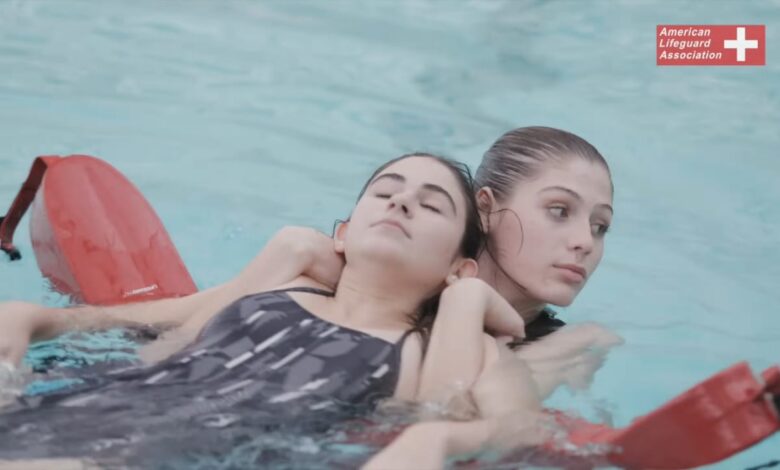Lifeguarding Across Different Water Facilities: Duties, Challenges, and Training

Lifeguarding is a great profession for ensuring the safety of swimmers by preventing accidents or responding to emergencies with respect to various facilities such as water parks, public beaches, swimming pools, etc. While each water facility has its peculiarities and challenges, the general duties and responsibilities assigned to lifeguards vary according to the setting.
This article discusses different water environments, assigned duties for lifeguards, and relevant training for each environment.
Lifeguarding on the Beach
Beaches are among the places where lifeguards face the most unpredictable conditions. Open waters threaten swimmers with hazards such as rip currents, sudden changes in depth, encounters with marine life, or strong waves. With constant changes in the prevailing conditions, lifeguards are required to stay alert and must be good swimmers.
Challenges Facing Beach Lifeguards
- Rip Currents: These narrow currents can be strong and are known to pull swimmers quickly away from the shore, and therefore are responsible for most rescues.
- Weather Changes: The conditions that prevail before, during, and after a storm: high winds, storm waves, erratic tides, and surf create confrontational conditions.
- High Numbers in Crowds: The continuous stream of visitors on beaches creates a putatively impossible challenge in tracking the safety of each and every one.
- Extended Coverage Areas: Unlike pools, where lifeguards cover their defined zones, beaches offer a practically endless shoreline for complete patrol.
In order to mitigate the challenges they face, the beach lifeguards are equipped with rescue boards, jets, and communication devices. Training includes open-water rescue procedures, CPR, and first aid for marine environments.
Lifeguarding in Swimming Pools
Situations entail safer than at a beach, having a certain number of risks. There are specific lifeguard courses for lifeguarding in the pools. Lifeguards at indoor and outdoor swimming pools are inseparable both from enforcing rules of conduct at that facility while observing signs of distress and acting when emergencies arise.
Challenges Faced by Pool Lifeguards
- Slippery Surfaces: Pool decks can be slippery due to wetness, which can cause slips and falls.
- Diving Injuries: Any accident associated with diving into shallow water can have serious spinal injury consequences.
- Chemical Exposures: Chlorine and other chemicals are used for pool maintenance and can cause skin irritation or health issues if negligently handled.
- Children and Other Inexperienced Swimmers: The fun-filled environment of a pool attracts young swimmers, some of whom may be completely ignorant of any issues that need detection.
Pool lifeguards are able to give immediate first aid when necessary, while in-water rescue skills are performed with rescue tubes. However, their training also includes recognition of the signs of drowning as well as management of spinal injuries.
Lifeguarding in Water Parks
At a water park, the attractions include wave pools, lazy rivers, and high-speed slides. Each section of a water park poses its own risks; therefore, lifeguards are stationed at varying areas to monitor guest safety.
Challenges Faced by Water Park Lifeguards
- Multiple Attractions: Slides, wave pools, and water rides require lifeguards to be positioned at various points for continuous surveillance.
- Fast-Paced Environment: Riders may enter and exit attractions quickly, increasing the need for rapid assessments.
- Heightened Risk of Collisions: Wave pools and slides can cause guests to collide with one another, leading to injuries.
- Unpredictable Swimmer Behavior: Some visitors tend to break safety rules, raising the likelihood of accidents.
Training at water parks for lifeguards prepares them to swiftly conduct rescues in flowing water and manage emergency responses in energetic environments.
Lifeguarding at the Lake and River
Controlled environments such as pools and water parks have a completely different standard for safety. Natural freshwater settings such as lakes and rivers create their own hazards. Low visibility due to muddy waters, unknown obstacles underwater, and strong ones pose serious threats.
Challenges Faced by Lake and River Lifeguards
- Limited Visibility: Unlike pools, the water in lakes and rivers is often not clear, making it difficult to see distressed swimmers.
- Unpredictable Currents and Depths: Rivers may have fast currents, while lakes can have deep, unexpected drop-offs.
- Boat or Watercraft Activity: Many lakes and rivers allow boating, increasing the risk of collisions or entanglements.
- Wildlife Hazards: Some freshwater environments have aquatic life that can harm swimmers.
Lifeguards in these areas must be profoundly skilled in open-water rescue, including the use of boats or kayaks for assistance, with a robust knowledge of local wildlife and environmental hazards.
Essential Training for Lifeguards
No matter what facility they work at, lifeguards must be thoroughly trained to respond during emergency situations. Lifeguard courses include instruction in water rescue techniques, first aid, CPR, and AED training, with specialized modules depending on the specific environment such as open-water rescue for beach lifeguards and swift-water rescue training for river lifeguards.
The Role of the American Lifeguard Association
However, the American Lifeguard Association and similar organizations are essential in setting standards in training programs that enable lifeguards to safeguard public safety. Programs emphasize hands-on learning, ensuring lifeguards are thoroughly prepared to overcome unique challenges present at various water facilities. The association also supports best practices in lifeguard training and safety regulations to maintain a standard of professionalism.
Final Word
Overall, lifeguards are a vital duty varying with the type of water facility. On the beach, in pools, parks, and other natural water bodies, lifeguards should always be prepared, well trained, and alert to handle emergencies that are peculiar to that environment. The training and certification of lifeguards mold them into specialized personnel who can keep swimmers safe.



